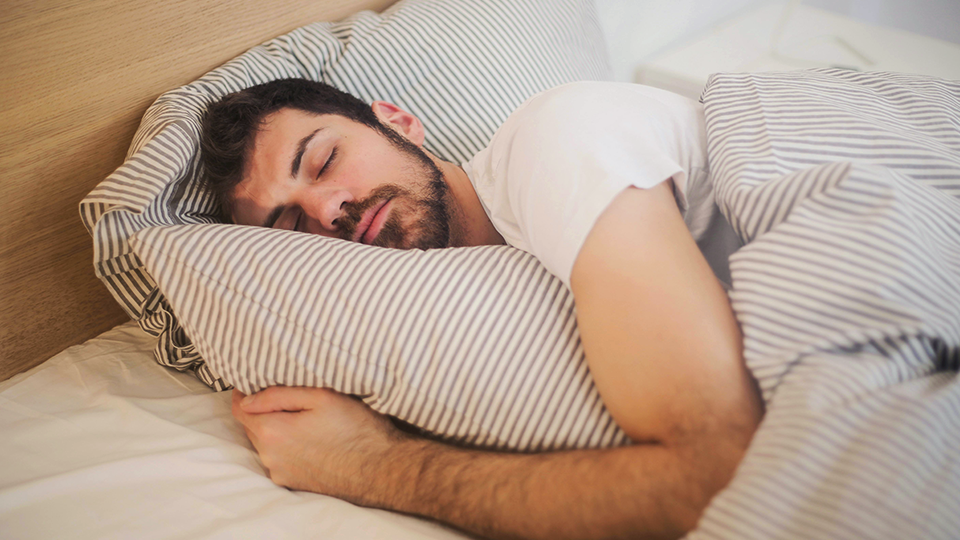As the earth revolves around the sun, there are periods of light and dark. Divided over 24 hours, when we experience daytime and nighttime depends on the time of the year as the earth’s axis tilts at varying degrees.
It is no surprise that our bodies have adapted to the earth’s day and night cycles by forming an internal process termed the circadian rhythm. The word circadian derives from the Latin roots ‘circa,’ meaning around, and ‘diem’ meaning day. This natural process regulates our body’s sleep-wake cycle and repeats every 24 hours (1).
Importantly, this rhythm can respond to the environment. For example, light and heat can impact its cycling – just think back to the last time you had jet lag. Rapid travel in a plane to a completely different time zone puts your circadian rhythm out of sync with the local time (2). Your body can adapt, but it does take time. There is also a circadian rhythm toward body temperature, with the body cooling down overnight and warming up over the day (3).
How does the body regulate the circadian rhythm?
Our bodies contain a primary circadian clock located in a part of the brain known as the suprachiasmatic nucleus, a distinct group of cells located in the hypothalamus (1). This structure receives information about light through the eyes. The eye’s retina contains the well-known photoreceptors – your “rods” and “cones” – which are used for vision. But the retina also contains specialized cells that project light directly to the suprachiasmatic nucleus, where they help synchronize a “master circadian clock” (1). As an example of how critical this structure is, its destruction results in the complete absence of a regular sleep–wake cycle (4).
What’s the point behind having a circadian rhythm?
The circadian rhythm helps regulate temperature, brain activity, hormone production, cell regeneration, and other biological activities (5). These patterns allow organisms to anticipate and prepare for precise and regular environmental changes. These patterns are also critical in regulating and coordinating normal metabolic processes (6). For instance, when mice have their clock genes effectively “deleted,” they massively overeat, leading to obesity and high blood sugar (7). In humans, circadian misalignment, like nightshift work, can decrease energy expenditure (8) and disrupt nutrient metabolism (9)—a good sleep cycle is paramount to maintaining a well-functioning circadian rhythm.
How can I improve my sleep?
As mentioned, the specialized structure in the hypothalamus – the suprachiasmatic nucleus – takes information on the lengths of the day and night from the retina and interprets it. Importantly, this information is passed to the pineal gland, a tiny structure aptly shaped like a pinecone, which releases the hormone melatonin (10). Melatonin release peaks at night and is one of the primary mechanisms behind putting us to sleep (10). Secretion of melatonin peaks at night, and its presence provides information to your brain about night-length.
Blue light from natural sources (like the sun) and unnatural sources (like your computer or phone screen) strongly suppresses melatonin production (11). Therefore, viewing screens or using LED lights close to bedtime can make it hard to fall asleep. However, this does not mean blocking out blue light all the time is good. Exposure to blue light during the day is vital to suppressing melatonin secretion, which increases feelings of wellbeing, alertness, and cognitive performance (12).
One of the best ways to better synchronize your circadian rhythm and promote more restful sleep is to get sun exposure earlier in the day (without filtering out blue light) and then reduce blue light exposure in the evening (12). Supplementing melatonin close before bed can also help improve sleep quality (13). Finally, decreasing body temperature is very important for sleep. Paradoxically, an effective method is heating your body before bed with a warm shower or bath. The warm water turns on mechanisms in your body to dissipate heat and reduce overall body temperature (14).
With a regular sleep cycle, healthy amounts of sunshine, and even melatonin supplementation, you, too, can be an expert at sleep.
References:
- LeGates TA, Fernandez DC, Hattar S. Light as a central modulator of circadian rhythms, sleep and affect. Nat Rev Neurosci. 2014 Jul;15(7):443-54. doi: 10.1038/nrn3743.
- Sack RL, Auckley D, Auger RR, Carskadon MA, Wright KP Jr, Vitiello MV, Zhdanova IV; American Academy of Sleep Medicine. Circadian rhythm sleep disorders: part I, basic principles, shift work and jet lag disorders. An American Academy of Sleep Medicine review. Sleep. 2007 Nov;30(11):1460-83. doi: 10.1093/sleep/30.11.1460.
- Kräuchi K, Wirz-Justice A. Circadian rhythm of heat production, heart rate, and skin and core temperature under unmasking conditions in men. Am J Physiol. 1994 Sep;267(3 Pt 2):R819-29. doi: 10.1152/ajpregu.1994.267.3.R819.
- Eastman CI, Mistlberger RE, Rechtschaffen A. Suprachiasmatic nuclei lesions eliminate circadian temperature and sleep rhythms in the rat. Physiol Behav. 1984 Mar;32(3):357-68. doi: 10.1016/0031-9384(84)90248-8.
- Serin Y, Acar Tek N. Effect of Circadian Rhythm on Metabolic Processes and the Regulation of Energy Balance. Ann Nutr Metab. 2019;74(4):322-330. doi: 10.1159/000500071.
- Sharma VK. Adaptive significance of circadian clocks. Chronobiol Int. 2003 Nov;20(6):901-19. doi: 10.1081/cbi-120026099.
- Turek FW, Joshu C, Kohsaka A, Lin E, Ivanova G, McDearmon E, Laposky A, Losee-Olson S, Easton A, Jensen DR, Eckel RH, Takahashi JS, Bass J. Obesity and metabolic syndrome in circadian Clock mutant mice. Science. 2005 May 13;308(5724):1043-5. doi: 10.1126/science.1108750.
- McHill AW, Melanson EL, Higgins J, Connick E, Moehlman TM, Stothard ER, Wright KP Jr. Impact of circadian misalignment on energy metabolism during simulated nightshift work. Proc Natl Acad Sci U S A. 2014 Dec 2;111(48):17302-7. doi: 10.1073/pnas.1412021111.
- Al-Naimi S, Hampton SM, Richard P, Tzung C, Morgan LM. Postprandial metabolic profiles following meals and snacks eaten during simulated night and day shift work. Chronobiol Int. 2004;21(6):937-47. doi: 10.1081/cbi-200037171.
- Pfeffer M, Korf HW, Wicht H. Synchronizing effects of melatonin on diurnal and circadian rhythms. Gen Comp Endocrinol. 2018 Mar 1;258:215-221. doi: 10.1016/j.ygcen.2017.05.013.
- Zeitzer JM, Dijk DJ, Kronauer R, Brown E, Czeisler C. Sensitivity of the human circadian pacemaker to nocturnal light: melatonin phase resetting and suppression. J Physiol. 2000 Aug 1;526 Pt 3(Pt 3):695-702. doi: 10.1111/j.1469-7793.2000.00695.x.
- Wahl S, Engelhardt M, Schaupp P, Lappe C, Ivanov IV. The inner clock-Blue light sets the human rhythm. J Biophotonics. 2019 Dec;12(12):e201900102. doi: 10.1002/jbio.201900102.
- Fatemeh G, Sajjad M, Niloufar R, Neda S, Leila S, Khadijeh M. Effect of melatonin supplementation on sleep quality: a systematic review and meta-analysis of randomized controlled trials. J Neurol. 2021 Jan 8. doi: 10.1007/s00415-020-10381-w.
- Haghayegh S, Khoshnevis S, Smolensky MH, Diller KR, Castriotta RJ. Before-bedtime passive body heating by warm shower or bath to improve sleep: A systematic review and meta-analysis. Sleep Med Rev. 2019 Aug;46:124-135. doi: 10.1016/j.smrv.2019.04.008.





